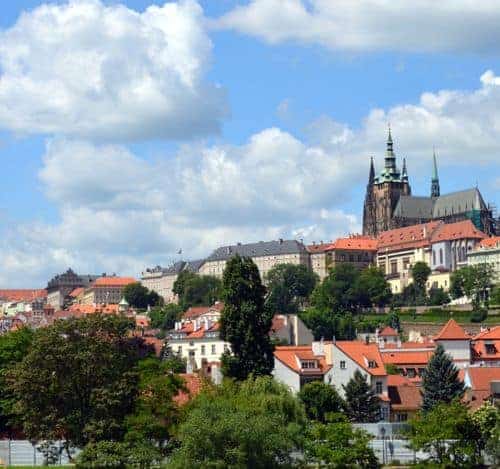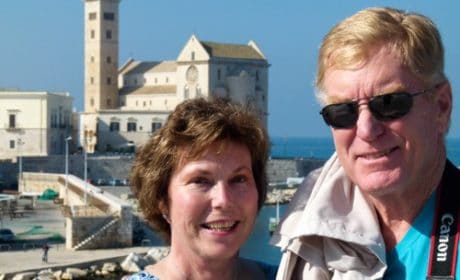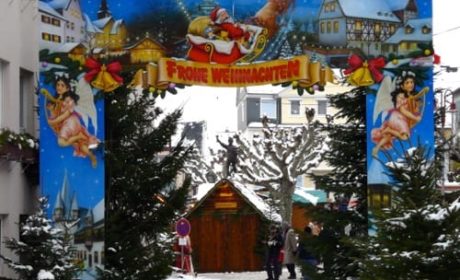Prague is definitely one of those European cities to be explored slowly if possible, but for those of us who might have some time constraints on our travel schedule, sometimes you’ve got to put the travel pedal to the medal to see all that a city has to offer. Prague, although a fairly compact city, certainly has a lot to see. Thankfully, for anyone who’s planning a trip to this incredibly beautiful city, Deborah Lonergan is here to tell us the most efficient and enjoyable way to visit Prague in two days.
Prague’s Old Town is compact and easy to explore on foot. My husband and I have spent the morning wandering, guidebooks and umbrellas in hand, literally soaked in the charm of this beautiful city. Gabriela Zelenková, our private guide for the afternoon, is a native of Prague. Her English is flawless. At each landmark, Gabriela shares her extensive knowledge of the city’s history, culture and architecture. We chat like old friends as we move between landmarks. It is a cultural exchange that would be impossible otherwise, a priceless bonus to our tour.
We would like to see the Jewish Museum in Prague, located in Josefov, Prague’s historic Jewish Quarter. Gabriela warns us that the area might be closed due to flooding of the Vltava River. The water has been receding, though, so we decide to take our chances. After a short, wet walk, we find the area and buildings open.
The Old Jewish Cemetery, The Ceremonial Hall and four synagogues are part of the Jewish Museum. The Pinkas Synagogue, its walls inscribed with names, towns, and dates of death or deportation, is a memorial to the 80,000 Bohemian and Moravian Jews who died in the Shoah (Holocaust). The Maisel, Spanish, and Klausen Synagogues and The Ceremonial Hall house the Jewish Museum in Prague’s extensive collection of documents, Judaica and art. The Old Jewish Cemetery, in use between the 15th and the 18th centuries, is a picturesque cluster of headstones. As the cemetery filled up, a layer of soil was added for new graves and the existing headstones were raised to the new layer. The result was the estimated ten layers of graves and twelve thousand headstones that we see today. The Old-New Synagogue, built in the 13th century, is not part of the Museum but is also open for tours. Prague’s small Jewish community still worships there.
We spend several hours moving between the buildings and the rain. The rain seems to suit the mood of the area. The beautiful artifacts and the buildings that hold them are a bittersweet memorial to central European Jewish culture: They, unlike most of the people who gave them life, survived the Holocaust.
The next day brings sunshine. We decide to walk to Wenceslas Square. Tourists and colorful gardens fill the space in front of the Monument to St. Wenceslas where, in November 1989, hundreds of thousands of Czechs stood shoulder to shoulder in protest, ending decades of Soviet domination. We can only guess what occupied the Square’s buildings twenty-five years ago; probably not the hotels, casinos, Starbucks and Golden Arches that we see today.
We meet Gabriela at our hotel after lunch. Prague Castle, an enormous complex of buildings, courtyards and gardens, is our destination this afternoon. The earliest buildings were probably started in the late 9th century CE; over the centuries, new construction and renovations produced the Castle’s excellent examples of Romanesque, Gothic, Renaissance and Baroque architecture. Although its buildings house numerous exhibits, Prague Castle is not a museum. The Office of the President of the Czech Republic is here, as is the seat of the Archbishop of the Czech Republic. State functions, public events and religious services are held regularly at various locations throughout the complex.
Although many of the buildings are open for tours, we decide to spend this sunny afternoon enjoying the grounds, the gardens and the lovely view across the Castle wall. The buildings’ interiors, Rudolf II’s art collection and the Toy Museum will have to wait for our next visit to Prague.
Have you ever had the pleasure of traveling to Prague? If so, do you have any travel tips to add to Deborah’s advice? Join the conversation at the My Itchy Travel Feet page on Facebook or send us an email with your comments or questions.





